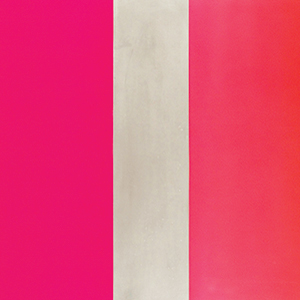Arts
San Jose Museum of Art Celebrates Valley's Art Pioneers
at the San Jose Museum of Art, is a blast from the past.
 RED RINGER: Fred Spratt, who's 'Big Red #1' is on display at SJMA's 'Artists in Residence,' was influenced by Mark Rothko.
RED RINGER: Fred Spratt, who's 'Big Red #1' is on display at SJMA's 'Artists in Residence,' was influenced by Mark Rothko.
Borrowing Blockbuster exhibitions in order to increase visibility and bring patrons through the door has been standard operating procedure for art museums for many years. Recently, however, curators at the San Jose Museum of Art discovered that hidden gems, locked away in storage for decades, can draw a crowd, especially when the story they tell is compelling.
"Artists in Residence: San Jose's 20th Century Vanguard," a group exhibition at the San Jose Museum of Art, is a blast from the past—serving as a reminder that, although New York City was the epicenter of post-war art, other regions were responding and contributing to the American art scene.
"We drew exclusively from the permanent collection for this exhibition," says SJMA curator Marja van der Loo. "The artists in this exhibition are all of an important generation that was pivotal to art practice at a crucial moment in the South Bay."
Specifically, the exhibition celebrates the artists who lived and worked in San Jose in the 1960s and who expressed their own personal reactions to the prevailing art movements: pop, abstract expressionism and minimalism. Many of these artists came to the region in order to teach at San Jose State College (now SJSU) and were also instrumental in the founding of the San Jose Museum of Art.
"The museum wanted to take the opportunity to honor the innovative artists who dedicated so much of their time and practice to San Jose and to the Museum," van der Loo said.
Artists like Sam Hernandez, Tony May and Fred Spratt (who would go on to chair the art department at SJSU) came to the city at a pivotal time. Once a small, agricultural community, San Jose would soon swell in population, thanks to the rise of the high tech industry in the Silicon Valley. Artistically, there was not much happening, but this group of innovators would change the cultural landscape by establishing gallery spaces, forming collaborative exhibitions and through the many students who were influenced by their teaching.
Fred Spratt is represented here with several large, lacquer on aluminum paintings that make direct reference to the color field work of Mark Rothko. These works, so formal and austere, are countered by a later series of paintings he created on the theme of Leda and the Swan.
Hernandez, well known for his innovative work in wood and for his long teaching career, harkens back to his Hispanic heritage with Dichos y Bichos II (2007). Joined slats of walnut wood, each incised with cursive script in Spanish, create a cascading poem.
"I've written the proverbs out in cursive to allude to the script of those horizontal banners surrounding elementary classrooms that provide models of good penmanship," Hernandez says.
A nod to the conceptual can usually be found in the work of Tony May. He is also known for his use of everyday materials, as can be seen in Awning from 1966. As the title suggests, it is comprised of canvas, wood and rope—and might indeed have served as an actual awning were it not attached to a wall inside an art gallery. It wasn't created to block the sun so much as to invite us to look again at something quotidian and familiar.
Jacqueline Thurston, once denied a position at San Jose State University because of her gender, was originally trained as a painter. She turned to photography in the early 1970s and her Hospital series reflects her predilection for composition and formal structure. These gelatin silver prints are striking, both for their staging and their subject matter. In Radiation Treatment, a woman lies on her stomach with a Hannibal Lecter-esque mask covering her face. Even more disquieting is Autopsy, a graphic depiction of a seldom-seen procedure.
All of the artists in the exhibition have retired and some have passed away. The show is a worthwhile effort to celebrate the work of these local innovators and to pay tribute to the contributions they made, both as artists and teachers. A public reception will be held April 14 at 7pm with several artists in attendance.
Artists in Residence: San Jose's 20th Century Vanguard
Thru Sep 18, 11am-5pm, $5-$10
San Jose Museum of Art


